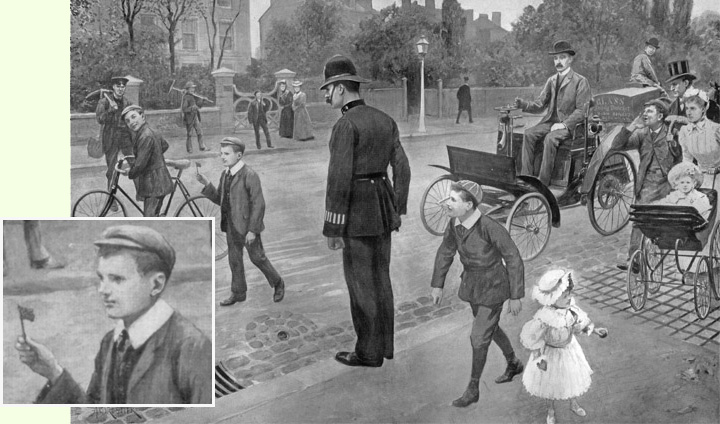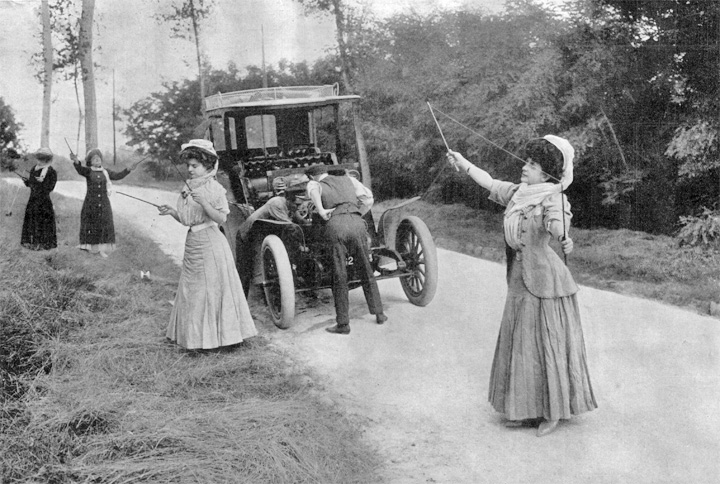From hard times to enforced leisure 1896-1907
Ten years after the abolition of the “Red Flag Act”, The Illustrated London News published a humorous drawing celebrating the famous action of a Mr Harry Heweston. The “Red Flag Act”, as the Locomotive Act of 1865 was known, set speed limits of 4 mph (6 km/h) in the country and 2 mph (3 km/h) in towns. It also stipulated a man with a red flag should walk 60 yards (55 meters) ahead of each vehicle to warn horse riders and horse drawn traffic of the approach of a self-propelled machine.
After buying a 3 hp Benz in Germany, Heweston went out in the motor car in his home town of Catford with a small boy and upon receiving a report of a policeman ahead, set the boy out of the car to carry out the letter of the law. Ironically the flag was a tiny scrap of red ribbon on a lead pencil!
 |
The Illustrated London News, 17 November 1906 |
The “Red Flag Act” was replaced on 15 November 1896 by The Emancipation Act, which allowed speeds of up to 14 mph (22 km/h). The abolition of the Red Flag Act was celebrated by the London to Brighton Car Run, which is now the world’s oldest car event.
Those who did not enjoy such arrangements, had to endure many hours of idle waiting. With this in mind the manufacturers of the French Diabolo game were active in an effort to market the game subliminally as the pastime of choice for those irritating delays on the open road.
 |
The Illustrated London News, 7 September 1907 |
